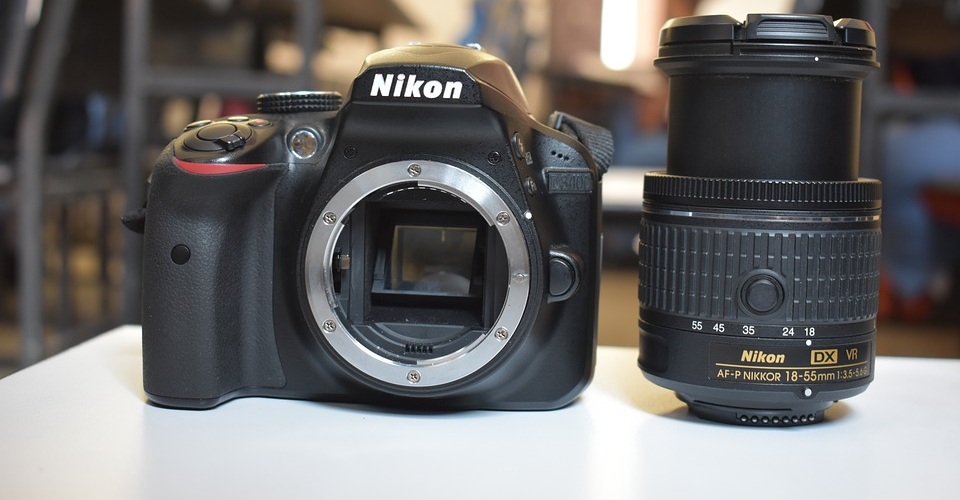6 Best Nikon D3400 Lenses in 2020
Nikon’s D3400 might be getting long in the tooth, but now is the time to pick one up if you’re looking for an affordable and versatile beginner-friendly camera. You’ll also need at least one lens to get started, and that’s what this article is going to help you choose.
Here are the best Nikon D3400 lenses you can get. Our picks encompass everything from lenses great for portraits and wildlife photography to ones that excel at shooting landscapes or products. Best in this context means a mixture of affordability and performance that reflects the price of your camera. We’ve also written about premium Nikon lenses if you don’t mind paying substantially more.
Keep in mind that the D3400 is an APS-C camera that applies a 1.6x crop factor to a lens’s focal length. For example, a lens whose full-frame focal range is 17-50mm behaves like a 27-80mm one on an APS-C body.
| Budget |
|---|
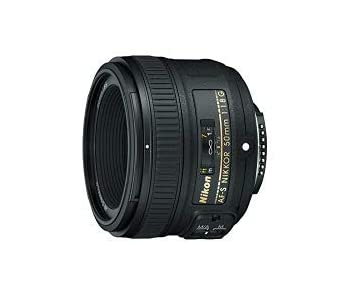 |
| Nikon AF-S Nikkor 50mm f/1.8G |
| 4.2/5.0 |
| Type: Standard prime |
| Image stabilization: No |
| Has an excellent flare resistance. |
| Check Amazon |
| Best Value |
|---|
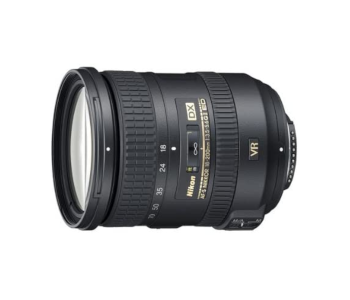 |
| Nikon AF-S DX NIKKOR 18-200mm f/3.5-5.6G ED VR II |
| 4.5/5.0 |
| Type: All-in-one zoom |
| Image stabilization: Yes |
| Fast auto and precise manual focusing. |
| Check Amazon |
| Top Pick |
|---|
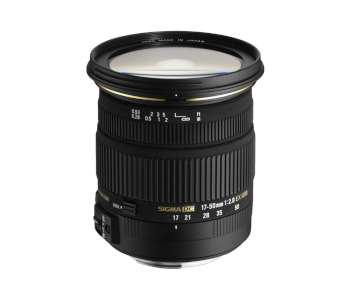 |
| Sigma 17-50mm f/2.8 EX DC OS HSM FLD |
| 4.6/5.0 |
| Type: Standard zoom |
| Image stabilization: Yes |
| Has few chromatic aberration issues. |
| Check Amazon |
Nikon D3400 Lenses Comparison Table
| Image | Product | Overall Rating | Image quality | Build quality | Versatility | Price |
|---|---|---|---|---|---|---|
 | Sigma 17-50mm f/2.8 EX DC OS HSM FLD | 4.6 | 4.5 | 4.6 | 4.6 | Check Price |
 | Nikon AF-S DX NIKKOR 18-200mm f/3.5- 5.6G ED VR II | 4.5 | 4.4 | 4.4 | 4.7 | Check Price |
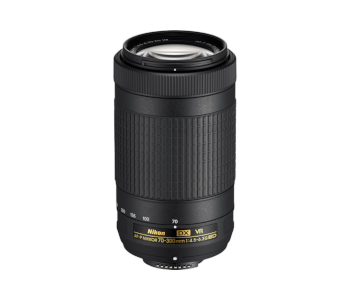 | Nikon AF-P DX NIKKOR 70-300mm f/4.5- 6.3G ED VR | 4.4 | 4.3 | 4.3 | 4.6 | Check Price |
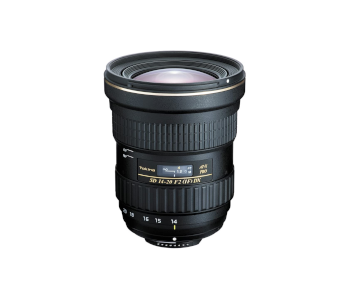 | Tokina AT-X 14-20mm f/2 PRO DX | 4.4 | 4.5 | 4.4 | 4.4 | Check Price |
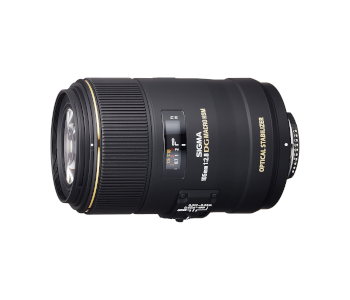 | Sigma 105mm F2.8 EX DG OS HSM Macro | 4.3 | 4.4 | 4.3 | 4.4 | Check Price |
 | Nikon AF-S Nikkor 50mm f/1.8G | 4.2 | 4.3 | 4.1 | 4.2 | Check Price |
1. Best Overall – Sigma 17-50mm f/2.8 EX DC OS HSM FLD
Editor’s Rating: 4.6/5
It’s safe to say that D3400 users are looking for value, and the 17-50mm f/2.8 EX DC OS HSM FLD delivers that in spades. It’s a standard zoom lens that dips into wide-angle and telephoto territory at its focal extremes. This makes it suitable for all manner of photography, including product, landscape, event, and portrait. It’s remarkably sharp and even has image stabilization.
Overview of Features
The 17-50mm f/2.8 EX DC OS HSM FLD is a mid-sized zoom lens that’s got some heft but won’t tire you out as a large telephoto would. Its plastic & metal frame fits nicely on the D3400 and doesn’t overbalance even when you zoom the lens out completely. Both rings have a satisfying texture, and the zoom ring is responsive.
Sigma uses the Hyper-Sonic motor to deliver quiet and accurate autofocus. It’s not as fast as the company’s Excellence line of premium lenses, but you’ll get lots of keepers unless you intend on shooting fast-action sports. The focus ring rotates while the lens is acquiring targets and can’t be used for manual correction in AF mode. Best of all, the 17-50mm f/2.8 EX DC OS HSM FLD comes with image stabilization good for an impressive four stops.
The 17-50mm f/2.8 EX DC OS HSM FLD is one of the strangest lenses we’ve ever seen in terms of sharpness. Central image clarity is good no matter what aperture or focal length you’re on and becomes excellent by f/5.6. The corners are far too soft at f/2.8 17mm and become even more so the more you zoom in. However, corner sharpness rallies almost miraculously by f/4 to the point that you’ll wonder if you’re using the same lens.
The FLD in the lens’s name pertains to a fluorine-like glass element that does an excellent job of minimizing chromatic aberration. Light falloff is controlled well for this lens type as it reaches 1.5 stops at its extreme. Bokeh is nothing to write home about and becomes nervous at smaller apertures, but blurry backgrounds look good nevertheless.
What We Didn’t Like
The 17-50mm f/2.8 EX DC OS HSM FLD shows moderate barrel distortion levels at 17mm and some pincushion distortion at 50mm. You can dispose of both easily either in post or by shooting JPEGs.
| Tech Specs |
|---|
| Dimensions: 3.3 x 3.3 x 3.6 in. |
| Weight: 1.2 lbs. |
| Type: Standard zoom |
| Minimum focal length: 17mm |
| Maximum focal length: 50mm |
| Maximum aperture: f/2.8 |
| Minimum aperture: f/22 |
| Minimum focus distance: 11 in. |
| Angle of view: 79.7° to 31.7° |
| Image stabilization: Yes |
| The Pros |
|---|
| Excellent sharpness for its price |
| Few chromatic aberration issues |
| Accurate autofocus |
| Capable image stabilization |
| The Cons |
|---|
| Very soft corners at f/2.8 |
| Some barrel and pincushion distortion |
2. Best Value – Nikon AF-S DX NIKKOR 18-200mm f/3.5-5.6G ED VR II
Editor’s Rating: 4.5/5
An all-in-one lens like the AF-S DX NIKKOR 18-200mm f/3.5-5.6G ED VR II is the perfect counterpart to a D3400. It can take sharp pictures of any imaginable subject ranging from landscapes to wildlife. The lens is stabilized, well-built, and its optical properties are well-rounded. There’s no better choice if you’ve got room in your budget for a single lens as it doesn’t excel at anything but does everything well.
Overview of Features
The AF-S DX NIKKOR 18-200mm f/3.5-5.6G ED VR II is made from high-quality plastic and has a metal hood. Its length extends significantly when zoomed out, but the outer lens doesn’t rotate and accommodates ND filters. Physical switches let you switch from automatic to manual focusing, turn image stabilization on, and lock the barrel into place at 18mm to keep it from sliding out during transport.
We were pleasantly surprised by the AF-S DX NIKKOR 18-200mm f/3.5-5.6G ED VR II’s autofocus speed. There are faster performers overall, but it snaps to attention quickly for a lens with such a wide focal range. You won’t experience hunting in low light either. Focusing manually is a pleasure since the ring offers the right amount of resistance. The lens has second-generation Vibration Reduction, allowing you to shoot handheld or snap action shots at quicker shutter speeds.
You’ll get the most out of the lens’s sharpness at 18mm f/8 and can look forward to great central sharpness no matter your preferences. Edges are understandably softer than the middle and gain quality gradually as the aperture decreases. Zooming in results in slight quality loss across the board and shifts peak performance towards f/11.
The AF-S DX NIKKOR 18-200mm f/3.5-5.6G ED VR II exhibits finely-tuned optical traits. It handles flare well thanks to 16 elements in 12 groups, letting you take pictures with the sun in a corner. There’s impressively little chromatic aberration for a lens with this focal length. You’ll see some at either length extreme. It’s the same with vignetting, which never poses a significant problem. Highlights look like onion rings and are too hard for satisfactory bokeh, but clever positioning will yield creamy background blur.
What’s Bad About It?
Distortion is the AF-S DX NIKKOR 18-200mm f/3.5-5.6G ED VR II only moderately serious optical drawback. Barrel distortion is pronounced at 18mm. Pincushion distortion is never as evident, but you’ll still want to correct for it if you zoom into architectural elements. The lens is susceptible to zoom creep, so keep it straight if you don’t want the focal length to change as you’re repositioning.
| Tech Specs |
|---|
| Dimensions: 3 x 3 x 3.8 in. |
| Weight: 1.2 lbs. |
| Type: All-in-one zoom |
| Minimum focal length: 18mm |
| Maximum focal length: 200mm |
| Maximum aperture: f/3.5 to 5.6 |
| Minimum aperture: f/22 |
| Minimum focus distance: 1.6 ft. |
| Angle of view: 76° to 8° |
| Image stabilization: Yes |
| The Pros |
|---|
| Wide focal range covers a broad range of subjects |
| Fast auto and precise manual focusing |
| Effective image stabilization |
| Few problems with CA and flare |
| The Cons |
|---|
| Pronounced barrel distortion at 18mm |
| Prone to zoom creep |
3. Nikon AF-P DX NIKKOR 70-300mm f/4.5-6.3G ED VR
Editor’s Rating: 4.4/5
Our budget pick is a fantastic all-around lens, but D3400 owners who specialize in bird or sports photography will need something sharper for the zooming this entails. The AF-P DX NIKKOR 70-300mm f/4.5-6.3G ED VR is an inexpensive telephoto lens for Nikon APS-C cameras that perfectly fits the bill. It’s remarkably sharp, isn’t scared by sunlight, and it’s as effortless to use as can be.
Overview of Features
You’ll notice right away how compact and light the AF-P DX NIKKOR 70-300mm f/4.5-6.3G ED VR is. That’s mainly due to its plastic body, including the mount. No need to worry about its quality since everything fits together tightly and the plastic used is high grade. A broad zoom ring dominates the body and is easy to rotate. It has a 90-degree throw and clearly marked stops for precise adjustment.
Nikon used a silent stepping motor in the lens, making it ideal for filming skittish wildlife. Focus acquisition is reasonably fast and barely affected by changes in light until there’s barely any left. Focusing manually could be more pleasant since the ring is thin and feels too loose. Vibration Reduction accounts for four stops of shake correction and can’t be turned off manually.
We were pleased with the AF-P DX NIKKOR 70-300mm f/4.5-6.3G ED VR’s sharpness, especially once you consider its price. Corners are a bit soft at max aperture but climb noticeably as you decrease it. Central sharpness ranges from good to outstanding, and you’ll get the best results between f/8 and f/11. Stepping down to f/16 is a good idea at any focal length, but you shouldn’t narrow the aperture more because of diffraction. The lens’s resolution takes an overall dip at 300mm. It’s not a deal-breaker, but you’ll want to be aware of the change.
The AF-P DX NIKKOR 70-300mm f/4.5-6.3G ED VR shows little distortion. You shouldn’t shoot into the sun since that introduces veiling flare and reduces contrast. However, careful positioning will net you spectacular shots during golden hour without introducing artifacts. There’s little CA, especially in the center. The only exception is f/4.5 at 70mm you can compensate for in post.
Are There Drawbacks?
The AF-P DX NIKKOR 70-300mm f/4.5-6.3G ED VR would benefit from a lens hood but doesn’t come with one. You can buy the barrel-shaped HB-77 hood separately. Vignetting is present throughout the lens’s focal range and most evident at f/5 170mm.
| Tech Specs |
|---|
| Dimensions: 2.8 x 2.8 x 4.2 in. |
| Weight: 14.6 oz. |
| Type: Telephoto zoom |
| Minimum focal length: 70mm |
| Maximum focal length: 300mm |
| Maximum aperture: f/4.5 to 6.3 |
| Minimum aperture: f/32 |
| Minimum focus distance: 3.6 ft. |
| Angle of view: 22° 50′ to 5° 20′ |
| Image stabilization: Yes |
| The Pros |
|---|
| Excellent sharpness |
| Lightweight yet sturdy |
| Silent autofocus |
| Controlled chromatic aberration and minimal distortion |
| The Cons |
|---|
| Some vignetting at the middle of its zoom range |
| Doesn’t come with a lens hood |
4. Tokina AT-X 14-20mm f/2 PRO DX
Editor’s Rating: 4.4/5
Tokina is a respected 3rd-party manufacturer renowned for superior wide-angle lenses. The AT-X 14-20mm f/2 PRO DX continues the tradition as it’s the first lens with a focal range of less than 18mm with a max aperture of f/2. This allows you to shoot landscapes, group portraits, events, or cities with a wonderful background blur and smooth bokeh.
Overview of Features
The first thing you’ll notice about the AT-X 14-20mm f/2 PRO DX is its weight. It’s one of the two heaviest lenses on review thanks to 13 elements in 11 groups, three of which are aspherical and two are low dispersion. The mount is metal and enhanced by a rubber gasket that offers a degree of moisture and dust sealing. Tokina doesn’t advertise the lens as being weatherproof, though.
You’re free to use any aperture you want if central sharpness is your only concern. It’s great even at 14mm f/2 and improves slightly as the amount of light passing through the lens gets smaller. The edges and especially the corners are another matter. They aren’t as well-resolved at f/2 and improve modestly at f/2.8. Bumping the aperture down to f/4 sees a noticeable improvement, while f/5.6 is the AT-X 14-20mm f/2 PRO DX’s sweet spot.
The lens was constructed with nine aperture blades, which give bokeh a rounded look while producing sun stars with 18 beams when shooting at low f-stops. The AT-X 14-20mm f/2 PRO DX can achieve a shallow depth of field that makes it suitable for group or product photos where clear subjects are contrasted against distinguishable but blurred-out backgrounds.
Some barrel distortion is inevitable in wide-angle lenses, but the AT-X 14-20mm f/2 PRO DX handles it well and doesn’t exhibit pincushion distortion at 20mm. Light falloff is subtle and unobtrusive, while the various specialized glass elements and a petal-shaped hood take care of artifacts and flares,
What We Didn’t Like
The AT-X 14-20mm f/2 PRO DX uses an old autofocus system that isn’t as fast or as precise as those seen on Nikon lenses. It produces faint sounds while moving your D3400 could pick up, so it isn’t great for video. Moreover, it uses an old-fashioned auto to manual focusing switch you engage by sliding the focus ring forward or back. Chromatic aberration is evident in branches and high-contrast scenes at wide apertures.
| Tech Specs |
|---|
| Dimensions: 3.5 x 3.5 x 4.2 in. |
| Weight: 1.6 lbs. |
| Type: Wide-angle zoom |
| Minimum focal length: 14mm |
| Maximum focal length: 20mm |
| Maximum aperture: f/2 |
| Minimum aperture: f/22 |
| Minimum focus distance: 11 in. |
| Angle of view: 91.68° to 71.78° |
| Image stabilization: No |
| The Pros |
|---|
| Commendably fast for a wide-angle lens |
| Modest barrel distortion |
| Beautiful bokeh & blurred backgrounds |
| Good sharpness across the board |
| The Cons |
|---|
| Slow and outdated autofocus |
| Some CA at wide apertures |
5. Sigma 105mm F2.8 EX DG OS HSM Macro
Editor’s Rating: 4.3/5
Sigma’s 105mm F2.8 EX DG OS HSM is almost a decade old. Even so, it still manages to surpass all but the company’s Art and Nikon’s premium macro lenses while costing less than $400. It’s tack-sharp, has impressive optical properties, and comes with image stabilization invaluable for handheld close-up photography
Overview of Features
The 105mm F2.8 EX DG OS HSM Is another heavy lens outfitted with a complex array of glass split into two independent segments. Its barrel moves while focusing and extends to almost twice its length. You’ll see distance as well as aspect ratios on it to make focusing easier. This is a true macro lens and can achieve 1:1 magnification at its minimum focusing distance.
Central sharpness is the attribute that can make or break a macro lens, and the 105mm F2.8 EX DG OS HSM has plenty of it. You can use this to your advantage and take pictures of nervous bugs or small lizards instantly with the aperture wide-open and image stabilization engaged. The edges and corners aren’t as well defined at first but become sharper the narrower the aperture.
The 105mm F2.8 EX DG OS HSM’s optical properties are excellent. It’s one of the best macro lenses we’ve tested when it comes to controlling both longitudinal and lateral CA. Distortion isn’t visible unless you’re dealing with lots of horizontal lines, and light falloff is small enough to give images a graceful appearance without cutting into essential details.
What’s Bad About It?
The 105mm F2.8 EX DG OS HSM is another lens with a disappointing autofocus system. This doesn’t matter as much for macro lenses since you’ll mostly make manual adjustments, but slowness and the focus ring’s uselessness in AF mode are issues to consider. Veiling flare is another thing to keep in mind. Shooting into the sun causes the image to brighten and decreases contrast significantly, so think carefully about your positioning.
| Tech Specs |
|---|
| Dimensions: 3.1 x 3.1 x 5 in. |
| Weight: 1.6 lbs. |
| Type: Macro lens |
| Mount: Nikon F |
| Focal length: 105mm |
| Maximum aperture: f/2.8 |
| Minimum aperture: f/16 |
| Minimum focus distance: 1 ft. |
| Angle of view: 23.3° |
| Image stabilization: Yes |
| The Pros |
|---|
| Outstanding central sharpness |
| Negligible distortion and chromatic aberration |
| True 1:1 magnification |
| 105mm is optimum for macro work |
| The Cons |
|---|
| Slow autofocus |
| Pronounced veiling flare |
6. Best Budget Option – Nikon AF-S Nikkor 50mm f/1.8G
Editor’s Rating: 4.2/5
We’ve already recommended the AF-S Nikkor 50mm f/1.8G as a fantastic budget pick for full-frame Nikon DSLRs because of its neutral focal length. Doing so for an APS-C camera like the D3400 is another no-brainer since 80mm is the optimum focal length for many types of photography, especially portraiture. The lens is pocketable, fast, and a pleasure to handle, not to mention cheap.
Overview of Features
The AF-S Nikkor 50mm f/1.8G is the smallest and lightest lens we’ve tested. Its pancake shape means the lens sits almost flush with the D3400 while barely increasing the camera’s weight. The focus ring is rubberized and responsive. You get a lens hood but don’t need to use it all the time since the front glass element is recessed deeply unless you’re shooting close to the minimum focusing distance.
Autofocus is handled by a noiseless motor that repositions the AF-S Nikkor 50mm f/1.8G’s seven elements with precision. It’s not as fast as more expensive Nikon primes and sometimes hunts in low light. However, you will find the autofocus to be adequate for all but split-second action shots. Acquiring focus causes the glass to extend within the inner barrel, so the lens’s dimensions stay fixed.
Central sharpness on the AF-S Nikkor 50mm f/1.8G resembles a gently-sloping curve. It starts out good at f/1.8 and reaches its peak between f/4 and f/5.6, only to decrease slightly until diffraction becomes apparent at f/16. The corners and edges are softer. Stepping down gradually improves both to more than acceptable levels.
Putting subjects into focus and isolating them from blurred-out surroundings is easy due to the AF-S Nikkor 50mm f/1.8G’s high max aperture. Bokeh at f/1.8 might be too nervous for perfectionists and looks much better at f/.2. Combining the recessed glass and lens hood leads to bright images with no contrast issues when you decide to include the sun in your shots. There’s some barrel distortion you likely won’t notice in real-life conditions unless your model is standing next to a brick wall.
Are There Drawbacks?
The AF-S Nikkor 50mm f/1.8G exhibits longitudinal chromatic aberration at f/1.8. This s manifested as cyan or magenta halos around specular highlights and other contrasting areas. It’s hard to correct artificially, so narrowing the aperture is your only solution. There’s also some focus breathing. You can remedy it by choosing and sticking to an f-stop before adjusting focus.
| Tech Specs |
|---|
| Dimensions: 2.8 x 2.8 x 2.1 in. |
| Weight: 6.5 oz. |
| Type: Standard prime |
| Mount: Nikon F |
| Focal length: 35mm |
| Maximum aperture: f/1.8 |
| Minimum aperture: f/16 |
| Minimum focus distance: 1.3 ft. |
| Angle of view: 47° |
| Image stabilization: No |
| The Pros |
|---|
| Great central sharpness |
| Lightweight and portable |
| Excellent flare resistance |
| Moderately fast but accurate and silent autofocus |
| The Cons |
|---|
| LoCA at f/1.8 |
| Some focus breathing |
Contents
- Nikon D3400 Lenses Comparison Table
- 1. Best Overall – Sigma 17-50mm f/2.8 EX DC OS HSM FLD
- Overview of Features
- What We Didn’t Like
- 2. Best Value – Nikon AF-S DX NIKKOR 18-200mm f/3.5-5.6G ED VR II
- Overview of Features
- What’s Bad About It?
- 3. Nikon AF-P DX NIKKOR 70-300mm f/4.5-6.3G ED VR
- Overview of Features
- Are There Drawbacks?
- 4. Tokina AT-X 14-20mm f/2 PRO DX
- Overview of Features
- What We Didn’t Like
- 5. Sigma 105mm F2.8 EX DG OS HSM Macro
- Overview of Features
- What’s Bad About It?
- 6. Best Budget Option – Nikon AF-S Nikkor 50mm f/1.8G
- Overview of Features
- Are There Drawbacks?

